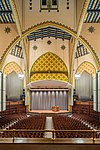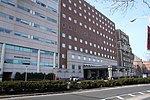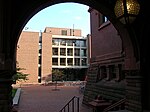Lauder Institute
The Joseph H. Lauder Institute of Management & International Studies (The Lauder Institute) offers a joint degree program at the University of Pennsylvania, combining an MA in international studies from the School of Arts & Sciences with an MBA from The Wharton School or JD from the Law School. Students pursue one of six Programs of Concentration focused on five regional areas (Africa, East and Southeast Asia, Europe, Latin America, or South Asia, the Middle East and North Africa) or the Global Program. Within the regional Programs of Concentration, students must attain superior language proficiency based upon an oral proficiency interview certified by Language Testing International in either Arabic, Chinese, French, German, Hindi, Japanese, Korean, Portuguese, Russian, or Spanish. Each year 60-70 students from around the world join the Lauder Program in May starting in Philadelphia before departing on an 8-week summer immersion to their respective regions of study. Students return to campus in August to join the MBA or JD program and then graduate with their class two years later. In the most recent incoming class, 60% of the class were US Citizens and 40% were international or dual citizens.
Excerpt from the Wikipedia article Lauder Institute (License: CC BY-SA 3.0, Authors).Lauder Institute
Penn Commons, Philadelphia
Geographical coordinates (GPS) Address Nearby Places Show on map
Geographical coordinates (GPS)
| Latitude | Longitude |
|---|---|
| N 39.9513 ° | E -75.1939 ° |
Address
College Hall
Penn Commons
19104 Philadelphia
Pennsylvania, United States
Open on Google Maps









